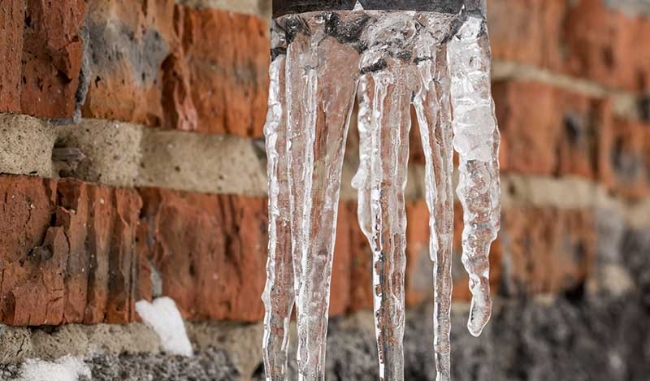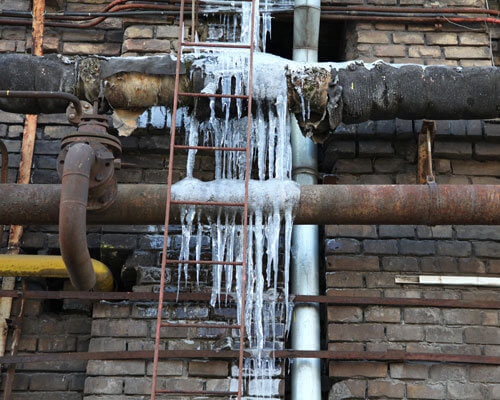Essential Tips to Protect Against Frozen Plumbing in Cold Weather
Essential Tips to Protect Against Frozen Plumbing in Cold Weather
Blog Article
Have you been on the lookout for advise involving How To Avoid Freezing Pipes?

Winter can wreak havoc on your pipes, particularly by freezing pipelines. Right here's how to avoid it from taking place and what to do if it does.
Intro
As temperature levels decline, the threat of icy pipes increases, possibly leading to costly repair work and water damage. Comprehending exactly how to avoid icy pipes is vital for home owners in cool environments.
Understanding Frozen Pipelines
What triggers pipes to ice up?
Pipes freeze when revealed to temperature levels listed below 32 ° F (0 ° C) for extended periods. As water inside the pipelines freezes, it increases, putting pressure on the pipeline wall surfaces and potentially triggering them to rupture.
Threats and problems
Frozen pipes can result in supply of water disturbances, residential or commercial property damages, and costly repair work. Burst pipes can flood homes and trigger considerable architectural damages.
Indicators of Frozen Pipes
Identifying icy pipelines early can prevent them from rupturing.
Just how to recognize icy pipes
Seek reduced water flow from faucets, uncommon odors or noises from pipes, and noticeable frost on exposed pipelines.
Prevention Tips
Protecting vulnerable pipelines
Cover pipes in insulation sleeves or use warmth tape to secure them from freezing temperatures. Focus on pipelines in unheated or external areas of the home.
Heating strategies
Maintain indoor rooms effectively warmed, specifically locations with pipes. Open up closet doors to permit cozy air to circulate around pipelines under sinks.
Shielding Outdoor Plumbing
Garden pipes and outside taps
Separate and drain yard pipes before winter months. Set up frost-proof faucets or cover exterior taps with shielded caps.
What to Do If Your Pipelines Freeze
Immediate actions to take
If you suspect frozen pipelines, keep taps open to ease stress as the ice thaws. Make use of a hairdryer or towels soaked in warm water to thaw pipes slowly.
Long-Term Solutions
Architectural modifications
Take into consideration rerouting pipelines away from exterior wall surfaces or unheated locations. Add extra insulation to attic rooms, basements, and crawl spaces.
Upgrading insulation
Buy high-grade insulation for pipes, attics, and wall surfaces. Proper insulation aids preserve consistent temperature levels and decreases the threat of frozen pipelines.
Conclusion
Protecting against frozen pipelines calls for positive measures and quick feedbacks. By comprehending the reasons, signs, and preventive measures, home owners can protect their plumbing throughout winter.
5 Ways to Prevent Frozen Pipes
Drain Outdoor Faucets and Disconnect Hoses
First, close the shut-off valve that controls the flow of water in the pipe to your outdoor faucet. Then, head outside to disconnect and drain your hose and open the outdoor faucet to allow the water to completely drain out of the line. Turn off the faucet when done. Finally, head back to the shut-off valve and drain the remaining water inside the pipe into a bucket or container. Additionally, if you have a home irrigation system, you should consider hiring an expert to clear the system of water each year.
Insulate Pipes
One of the best and most cost-effective methods for preventing frozen water pipes is to wrap your pipes with insulation. This is especially important for areas in your home that aren’t exposed to heat, such as an attic. We suggest using foam sleeves, which can typically be found at your local hardware store.
Keep Heat Running at 65
Your pipes are located inside your walls, and the temperature there is much colder than the rest of the house. To prevent your pipes from freezing, The Insurance Information Institute suggests that you keep your home heated to at least 65 degrees, even when traveling. You may want to invest in smart devices that can keep an eye on the temperature in your home while you’re away.
Leave Water Dripping
Moving water — even a small trickle — can prevent ice from forming inside your pipes. When freezing temps are imminent, start a drip of water from all faucets that serve exposed pipes. Leaving a few faucets running will also help relieve pressure inside the pipes and help prevent a rupture if the water inside freezes.
Open Cupboard Doors
Warm your kitchen and bathroom pipes by opening cupboards and vanities. You should also leave your interior doors ajar to help warm air circulate evenly throughout your home.

I stumbled upon that blog post about Helpful Tips to Prevent Frozen Pipes this Winter while doing a lookup on the internet. Don't hesitate to pause to share this entry if you enjoyed reading it. Bless you for being here. Come back soon.
Book Now Report this page